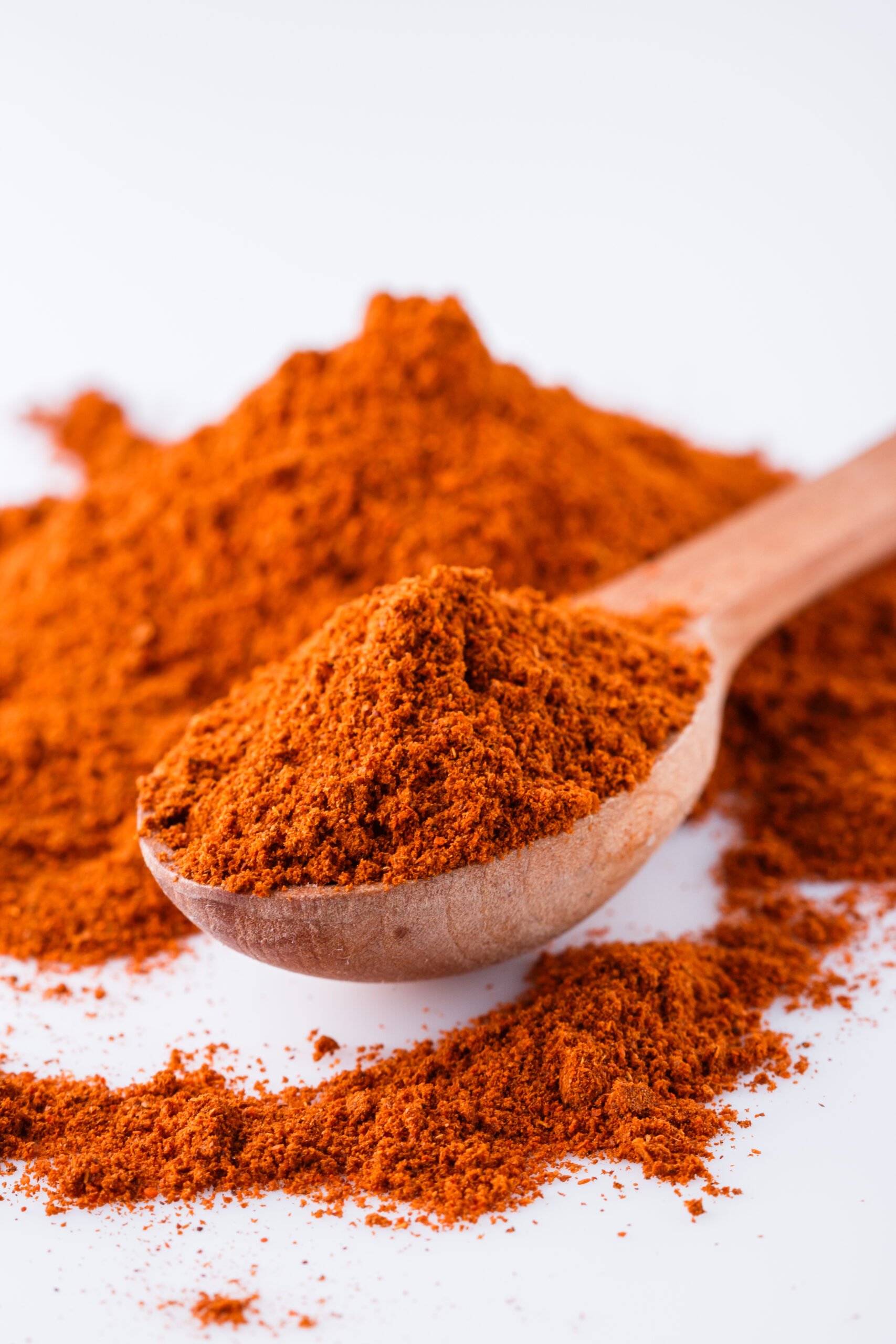
Kolhapuri Masala is a traditional spice blend from the city of Kolhapur in Maharashtra, known for its deep color, bold flavor, and signature heat. It combines sun-dried red chilies, roasted coconut, sesame seeds, coriander, cumin, and aromatic spices to create a mix that’s both fiery and complex.
Originally developed in local Maharashtrian kitchens, this masala is still prepared by roasting and grinding the ingredients by hand to preserve its authentic flavor. Used in classic dishes like Kolhapuri chicken, tambda rassa, and vegetable curries, it forms the foundation of some of the region’s most flavorful and robust cooking.
What Is Kolhapuri Masala?
Kolhapuri masala is a traditional spice blend from Kolhapur, a historic city in Maharashtra; India, known for its bold, flavorful cuisine. Nestled in western India, Kolhapur has long been a meeting point of farmers, traders, and royal cooks, a region where food is as expressive as its people.
The masala itself is a roasted mix of red chilies, coriander seeds, cumin, coconut, sesame, and whole spices. Prepared fresh in homes across western India, it forms the base of Kolhapuri-style curries, lentil stews, and festive dishes.
Quick Facts
- Dish: Kolhapuri Masala (Maharashtrian Spice Blend)
- Origin: Kolhapur, Maharashtra, India
- Main Ingredients: Dried red chilies, coconut, sesame seeds, coriander, cumin, garlic
- Flavor Profile: Fiery, smoky, nutty, and aromatic
- Common Uses: Kolhapuri chicken, mutton curry, vegetable gravies
- Type: Dry spice blend, typically homemade
Key Ingredients and Their Roles
Each element in Kolhapuri masala brings its own strength, creating the perfect balance between heat, aroma, and depth.
-
Byadgi or Kashmiri red chilies: Add vibrant color and mild warmth.
-
Lavangi chilies (Kolhapuri variety): Give the blend its signature fiery kick.
-
Coriander seeds: Build the body and base of the masala.
-
Cumin seeds: Add gentle warmth and aroma.
-
Dried coconut: Softens the spice and adds roasted richness.
-
Sesame seeds: Provide nuttiness and balance sharp heat.
-
Black pepper and cloves: Deepen flavor and create lasting warmth.
-
Cinnamon and black cardamom: Add sweet spice undertones.
-
Bay leaf: Brings a light herbal freshness.
The Roasting and Grinding Process
The making of Kolhapuri masala begins with patient roasting. Red chilies, coriander, and cumin are toasted until aromatic, followed by coconut, sesame, and whole spices that deepen its color.
Once cooled, they’re ground together into a rich, red powder that carries both heat and harmony. This slow process transforms raw spices into the bold heart of Kolhapuri cooking.
Flavor Profile
Kolhapuri masala is bold, smoky, and full of life. Its roasted chilies bring deep heat, while coconut and sesame add body and calm. The mix feels layered; fiery at first, then rounded with earthy warmth and spice-laced depth.
Culinary Uses Across India and Beyond
In Maharashtra:
Kolhapuri masala forms the base of iconic dishes like tambda rassa (red curry), pandhra rassa (white curry), kolhapuri mutton, and chicken sukka. It’s also added to lentils, usal, and stuffed vegetables for bold flavor.
Across India:
Restaurants and home cooks use it to bring color and heat to gravies, paneer curries, and biryanis — a favorite for those who love strong, rustic spice.
Beyond India:
Chefs worldwide use Kolhapuri masala to season marinades, soups, and roasted vegetables, adding a fiery Indian heartbeat to global kitchens.
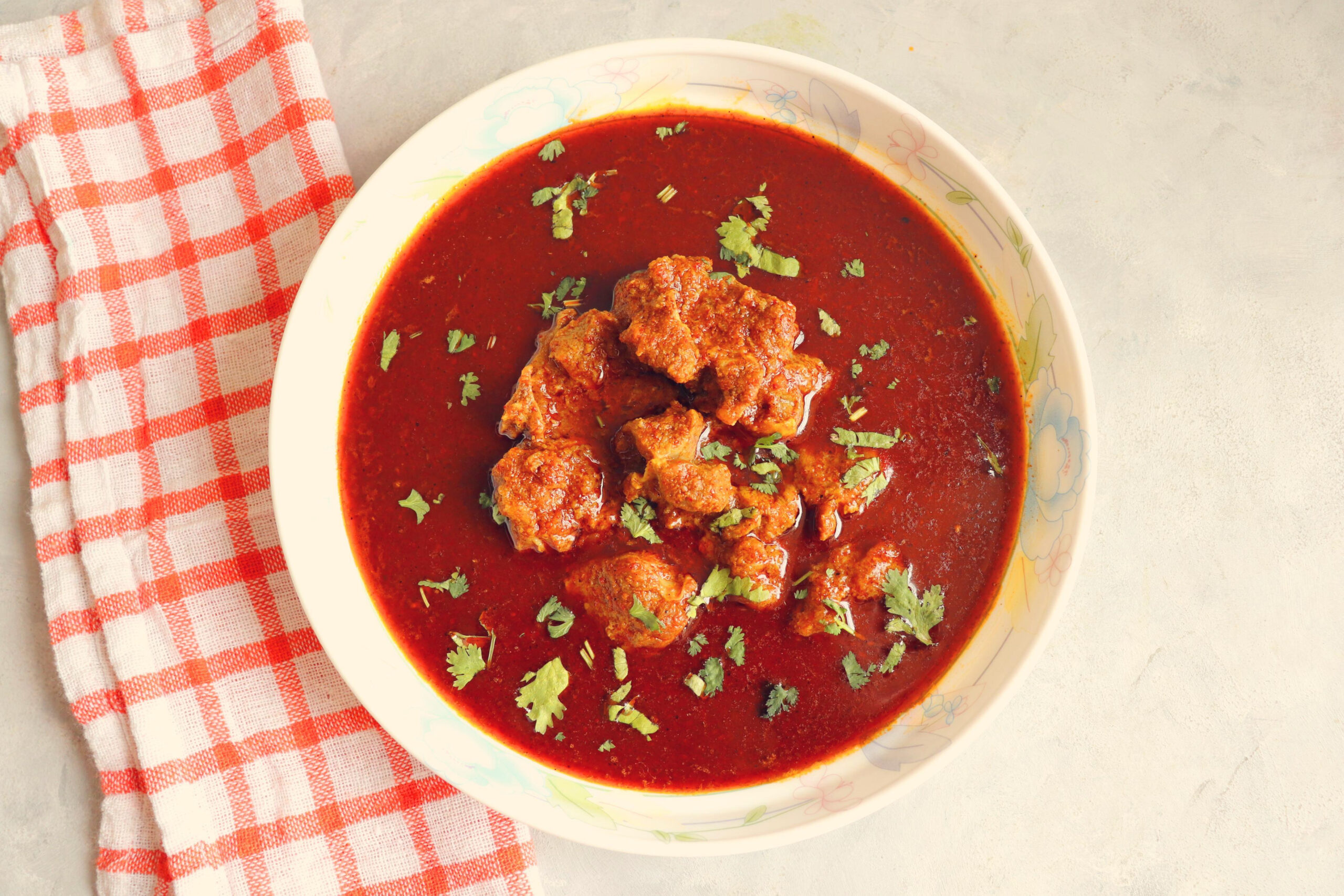
Flavor Pairings
-
Coconut milk: Softens the spice and adds creamy depth.
-
Tamarind: Balances heat with gentle tang.
-
Jaggery: Brings natural sweetness that rounds sharp flavors.
-
Garlic and onion: Strengthen its earthy base.
-
Ghee: Enhances aroma and adds richness.
-
Tomatoes: Blend beautifully with its red, roasted tones.
-
Lemon juice: Adds freshness and lifts the spice.
-
Fresh coriander: Completes the dish with color and calm.
Together, these pairings turn Kolhapuri masala into a full-bodied experience, bold yet beautifully balanced.
Quick Tips to Get the Best Out of Kolhapuri Masala
A few simple touches can help you bring out its full roasted richness and balanced heat.
-
Fry in oil or ghee first: Helps release its color and aroma.
-
Add near the end: Keeps the blend’s brightness and prevents bitterness.
-
Balance the heat: Pair with coconut milk, yogurt, or jaggery for harmony.
-
Use sparingly: A teaspoon can transform an entire curry.
-
Avoid over-roasting: Reheating for too long can turn it smoky or harsh.
-
Store dry: Even a hint of moisture dulls its fire.
Substitutes
If Kolhapuri masala isn’t available, a few close blends can bring similar warmth and depth to your dishes.
-
Garam masala with extra chili powder: Offers aroma and mild heat, though less smoky.
-
Sambar masala: Adds spice and color but with a tangier, lentil-rich base.
-
Homemade mix: Roast red chilies, coriander, cumin, and coconut lightly for a quick alternative.
-
Konkani masala: A coastal-style substitute that carries similar warmth with softer tones.
While none capture its full fire, these blends echo its essence; bold, rustic, and unmistakably Indian.
Nutritional Value (Per Tablespoon – Approx. 10g)
Kolhapuri masala blends chilies, seeds, and aromatic spices, offering both intensity and natural nutrition.
-
Calories: 45 kcal
-
Protein: 1.8 g
-
Fat: 2.1 g
-
Carbohydrates: 5.1 g
-
Fiber: 1.2 g
-
Iron: 5% of daily value
-
Magnesium: 3% of daily value
-
Sodium: 0 mg (before added salt)
How to Store It Right
-
Use airtight glass jars: Preserve freshness and prevent moisture from dulling the aroma.
-
Keep away from sunlight: Direct heat can fade its rich red color.
-
Avoid plastic containers: Glass or steel keeps the flavor pure.
-
Refrigerate in hot weather: Helps retain oils from chilies and coconut.
-
Prepare small batches: Fresh roasting keeps the blend lively and aromatic.
-
Shelf life: Stays fresh for 2–3 months when stored properly.
Handled with care, Kolhapuri masala keeps its fiery character alive, always ready to spark the next curry.
Health Benefits
May boost metabolism
Due to the presence of capsaicin in red chilies and piperine in black pepper, this blend can help increase calorie burn and improve circulation (Sources 1, 2, 3, 4).
Can support digestion
By stimulating digestive enzymes through spices like cumin and coriander (Sources 1, 2).
May provide antioxidants
Thanks to antioxidants in cloves, cinnamon, and garlic. (Source).
Can help relieve congestion
Due to the presence of capsaicin in red chilies and piperine in black pepper, this blend may help relieve nasal congestion and clear sinuses (Sources 1, 2 ).
Final Thoughts
In every handful of Kolhapuri masala, there’s more than heat, there’s heritage. It speaks of open courtyards where chilies dry under the sun, of stone mortars echoing through the lanes of Kolhapur, and of hands that roast with patience and pride.
It’s the heartbeat of Maharashtra’s fiery soul; bold yet balanced, fierce yet familiar. Every curry it touches carries that legacy forward, proof that true flavor doesn’t rush; it’s roasted, layered, and deeply lived.
FAQs
What is Kolhapuri masala used for?
It’s used in classic Maharashtrian curries like tambda rassa, pandhra rassa, and Kolhapuri mutton, as well as vegetable and lentil dishes.
Is Kolhapuri masala very spicy?
Yes. It’s known for its bold, fiery flavor though the heat can be balanced with coconut, ghee, or jaggery.
Can vegetarians use Kolhapuri masala?
Absolutely. It adds rich flavor to dishes like paneer Kolhapuri, bhindi sabzi, and spiced rice.
How is Kolhapuri masala different from goda masala?
Kolhapuri masala is hot and smoky, while goda masala is mild and sweet. Both reflect distinct regional styles of Maharashtra.
Can I make Kolhapuri masala at home?
Yes. Roast red chilies, coriander, cumin, coconut, sesame, and whole spices, then grind to a fine red powder.
How long does Kolhapuri masala stay fresh?
It stays aromatic for about 2–3 months when stored in an airtight container away from heat and sunlight.
Learn More About Kolhapuri Masala
Kannan's Kitchen — Kolhapuri Masala
This article offers a comprehensive overview of Kolhapuri Masala; covering its origins in Maharashtra, the whole-spice ingredients and roasting method, and how this bold blend becomes the backbone of authentic Kolhapuri-style dishes.
Welza Foods Why — Kolhapuri Masala is Maharashtra's Most Fearless Spice
This article provides a detailed overview of Kolhapuri Masala, describing its origins in Maharashtra, its bold spice profile, the roasting and blending process, and how it defines the region’s most fearless dishes.


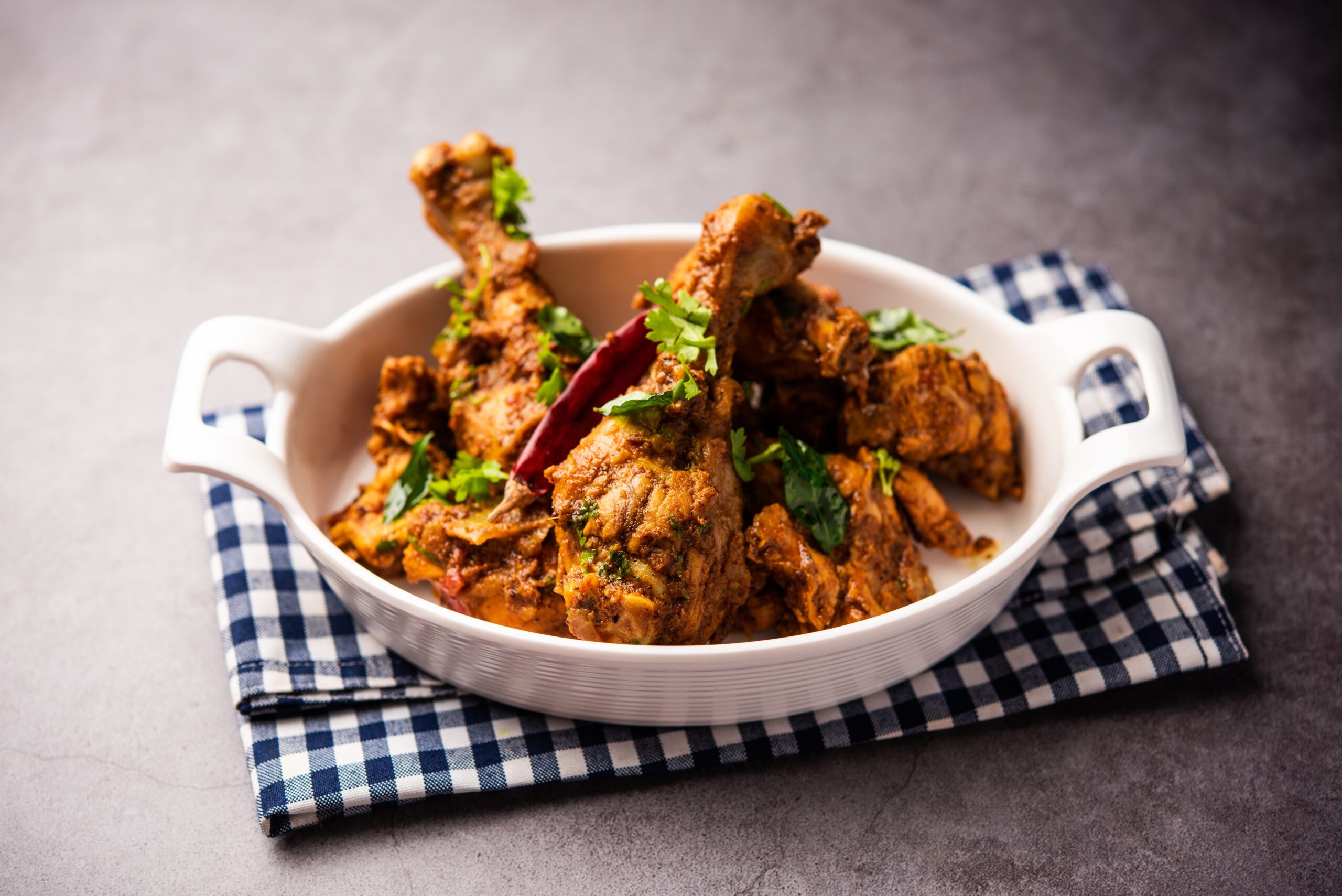
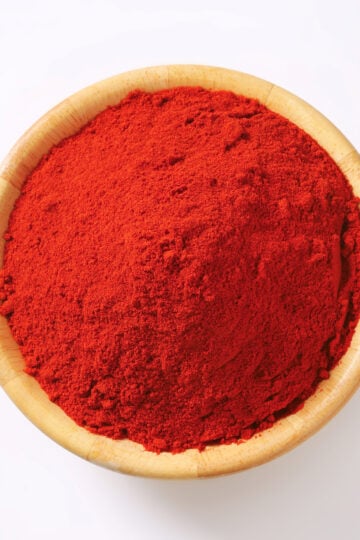
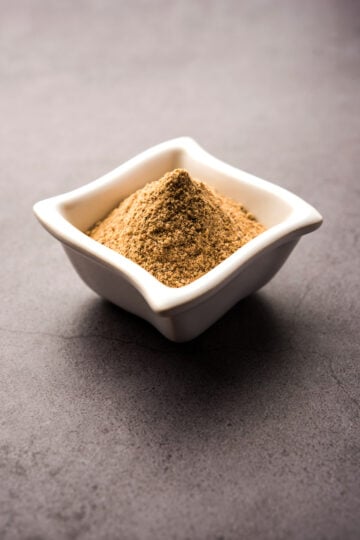
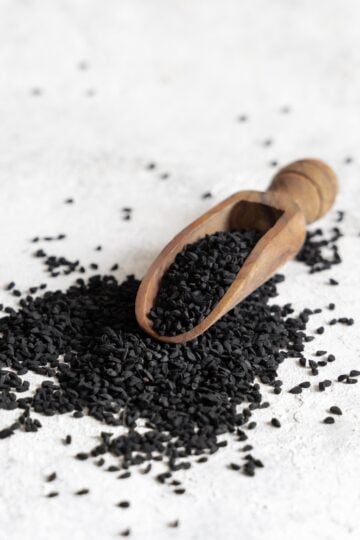
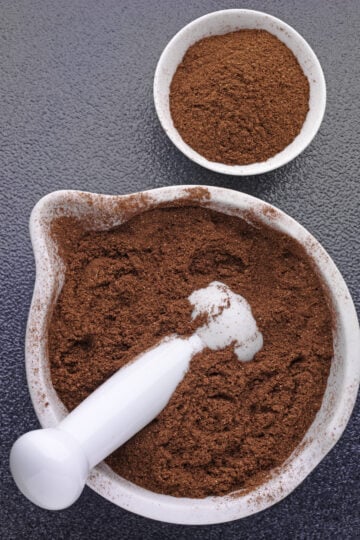
Have a question or something to share? Leave a comment below!